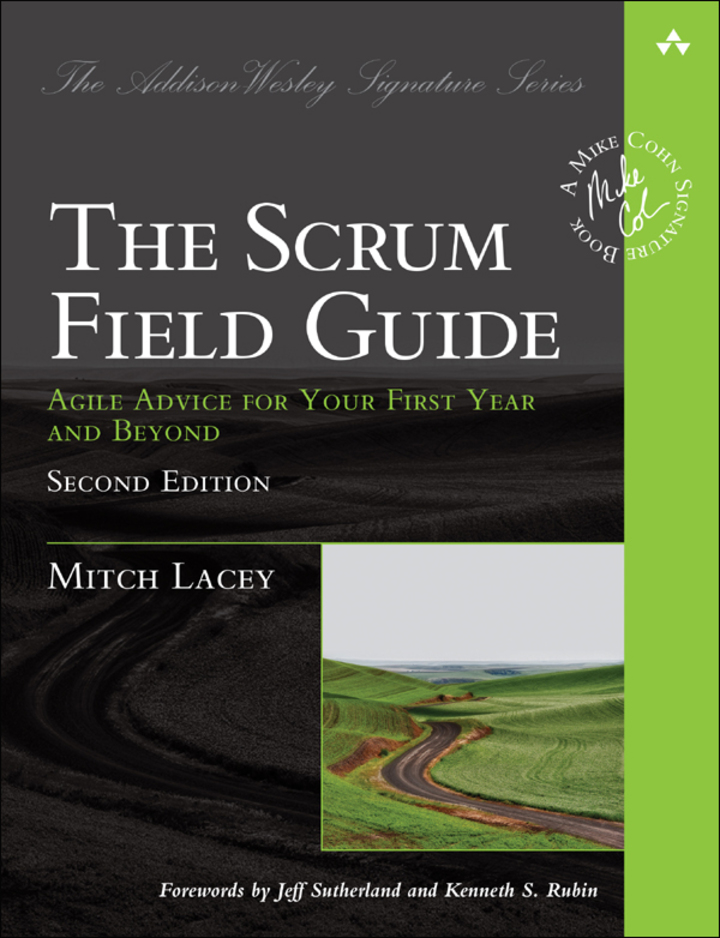
Scrum Field Guide, The: Agile Advice for Your First Year and Beyond, 2nd edition
PUBLISHER: PEARSON
eBook edition. 1 Year Subscription. Dành cho Cá nhân | Trường ĐH, Nhóm, Thư Viện: Gọi 0915920514 để báo giá Pearson, Vital Source eBook hoặc mua Sách In
Hướng dẫn thực địa về Scrum sẽ mang lại cho học viên những kỹ năng và sự tự tin để học Scrum một cách nhanh chóng và thành công. Người thực hành Scrum lâu năm, Mitch Lacey xác định những thách thức lớn liên quan đến việc áp dụng Scrum ở giai đoạn đầu, cũng như các vấn đề sâu hơn xuất hiện sau khi các công ty áp dụng Scrum và mô tả cách các tổ chức khác đã vượt qua chúng. Học sinh sẽ học cách đạt được “chiến thắng nhanh chóng” để xây dựng sự hỗ trợ và sau đó sử dụng tính linh hoạt của Scrum để tối đa hóa việc tạo ra giá trị trong toàn bộ quá trình.
- Foreword by Jeff Sutherland xixForeword by Kenneth S. Rubin xxiiiPreface xxvAcknowledgments xxixAbout the Author xxxi
- Chapter 1: Scrum: Simple, Not Easy 1The Story 1Scrum 6Keys to Success 17References 18 Part I: Getting Prepared 21
- Chapter 2: Getting People on Board 23The Story 23The Model 29Change Takes Time 30Keys to Success 33References 34Work Consulted 34
- Chapter 3: Using Team Consultants to Optimize Team Performance 35The Story 35The Model 39Keys to Success 47Reference 50Works Consulted 50
- Chapter 4: Predicting Team Velocity 51The Story 51The Model 56Keys to Success 65References 67
- Chapter 5: Implementing the Scrum Roles 69The Story 69The Model 73Keys to Success 78
- Chapter 6: Determining Sprint Length 81The Story 81The Model 84Keys to Success 91Reference 92
- Chapter 7: How Do You Know You’re Done? 93The Story 93The Model 95Keys to Success 101References 102
- Chapter 8: The Case for a Full-Time ScrumMaster 103The Story 103The Model 106Keys to Success 112References 116Work Consulted 116 Part II: Field Basics 117
- Chapter 9: Why Engineering Practices Are Important in Scrum 119The Story 119The Practices 123Keys to Success 131References 133Works Consulted 134
- Chapter 10: Core Hours 135The Story 135The Model 138Keys to Success 142
- Chapter 11: Release Planning 143The Story 143The Model 147Keys to Success 154Reference 156
- Chapter 12: Decomposing Stories and Tasks 157The Story 157The Model 159Keys to Success 167References 168Works Consulted 168
- Chapter 13: Keeping Defects in Check 169The Story 169The Model 170Keys to Success 172References 173Work Consulted 174
- Chapter 14: Sustained Engineering and Scrum 175The Story 175The Model 178Keys to Success 181References 182
- Chapter 15: The Sprint Review 183The Story 183The Model 186Keys to Success 188Works Consulted 191
- Chapter 16: Retrospectives 193The Story 193The Practice 196Keys to Success 200References 202 Part III: First Aid 203
- Chapter 17: Facilitating a Productive Daily Scrum 205The Story 205The Model 208Keys to Success 213
- Chapter 18: The Fourth Question in Scrum 217The Story 217The Model 220Keys to Success 221Reference 221
- Chapter 19: Keeping People Engaged with Pair Programming 223The Story 223The Model 225Keys to Success 230References 231
- Chapter 20: Adding New Team Members 233The Story 233The Model 235Keys to Success 238References 239
- Chapter 21: When Cultures Collide 241The Story 241The Model 246Keys to Success 251References 254Works Consulted 254
- Chapter 22: Sprint Emergency Procedures 255The Story 255The Model 257Keys to Success 260References 261 Part IV: Advanced Survival Techniques 263
- Chapter 23: Sustainable Pace 265The Story 265The Model 269Keys to Success 274References 276
- Chapter 24: Delivering Working Software 277The Story 277The Model 281Keys to Success 284Work Consulted 287
- Chapter 25: Optimizing and Measuring Value 289The Story 289The Model 292Keys to Success 297Reference 299Works Consulted 299
- Chapter 26: Up-Front Project Costing 301The Story 301The Model 306Keys to Success 310References 311
- Chapter 27: Documentation in Scrum Projects 313The Story 313The Model 316Keys to Success 323References 324
- Chapter 28: Outsourcing and Offshoring 325The Story 325The Model 328Keys to Success 332References 337Work Consulted 337
- Chapter 29: Prioritizing and Estimating Large Backlogs–The Big Wall 339The Story 339The Model 342Keys to Success 346References 348
- Chapter 30: Writing Contracts 349The Story 349The Model 353Keys to Success 361References 363 Part V: Wilderness Essentials 365
- Chapter 31: Driving to Done through Collaboration 367The Story 367The Model 371Keys to Success 380References 382
- Chapter 32: How Story Points Relate to Hours 383The Story 383The Model 386Keys to Success 391References 394
- Chapter 33: Immersive Interviewing and Hiring 395The Story 395The Model 398Keys to Success 404References 406Work Consulted 407
- Chapter 34: Aligning Incentives with Outcomes 409The Story 409The Model 412Keys to Success 415Reference 417
- Chapter 35: Risk Management in Scrum 419The Story 419The Model 420Keys to Success 424Works Consulted 425 Appendix: Scrum Framework 427The Roles 428The Artifacts 429The Meetings 431Putting It All Together 434 Index 435















